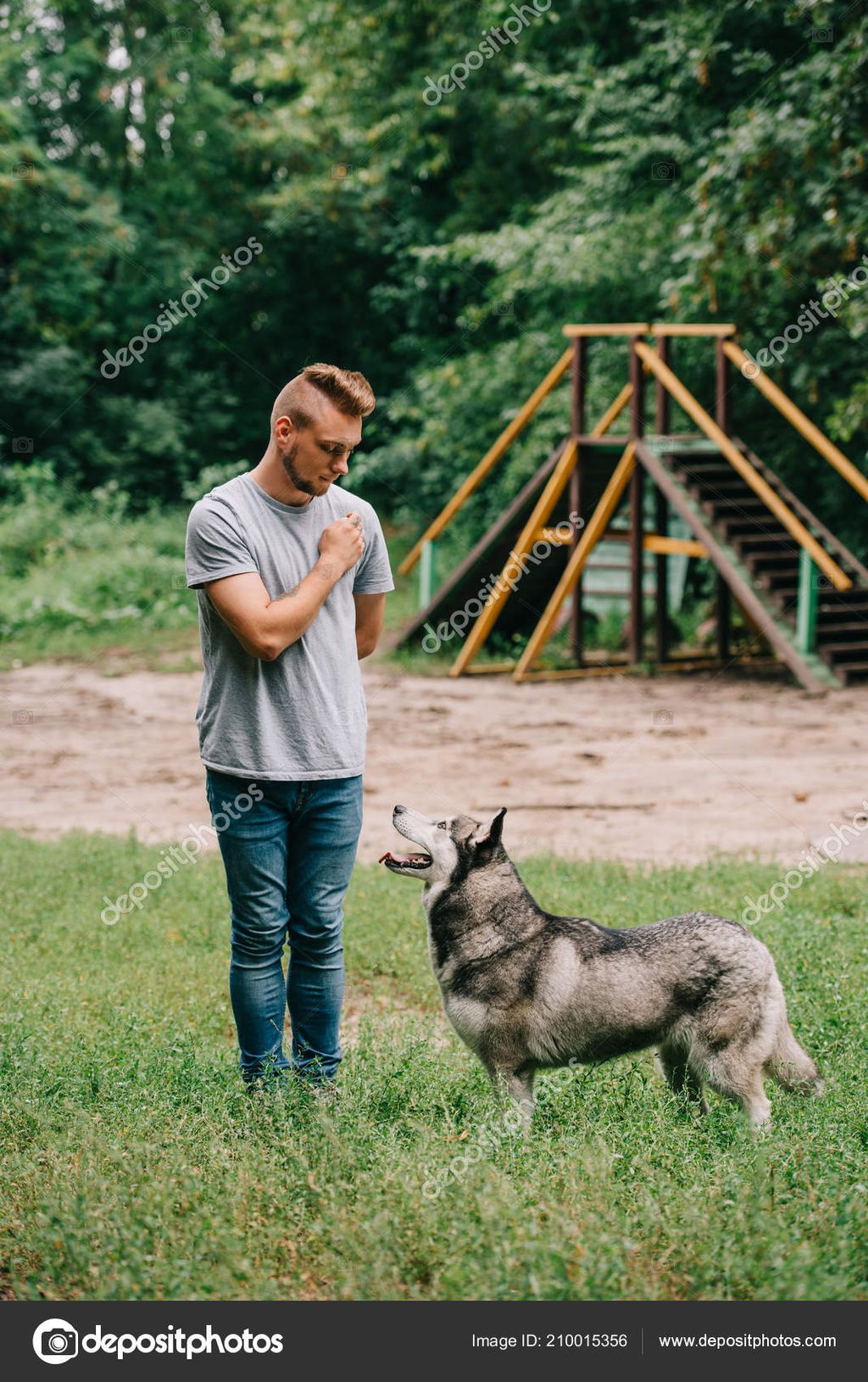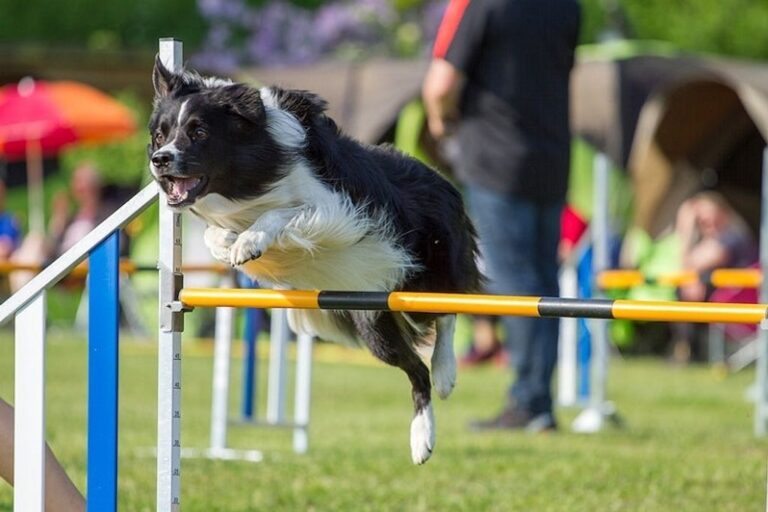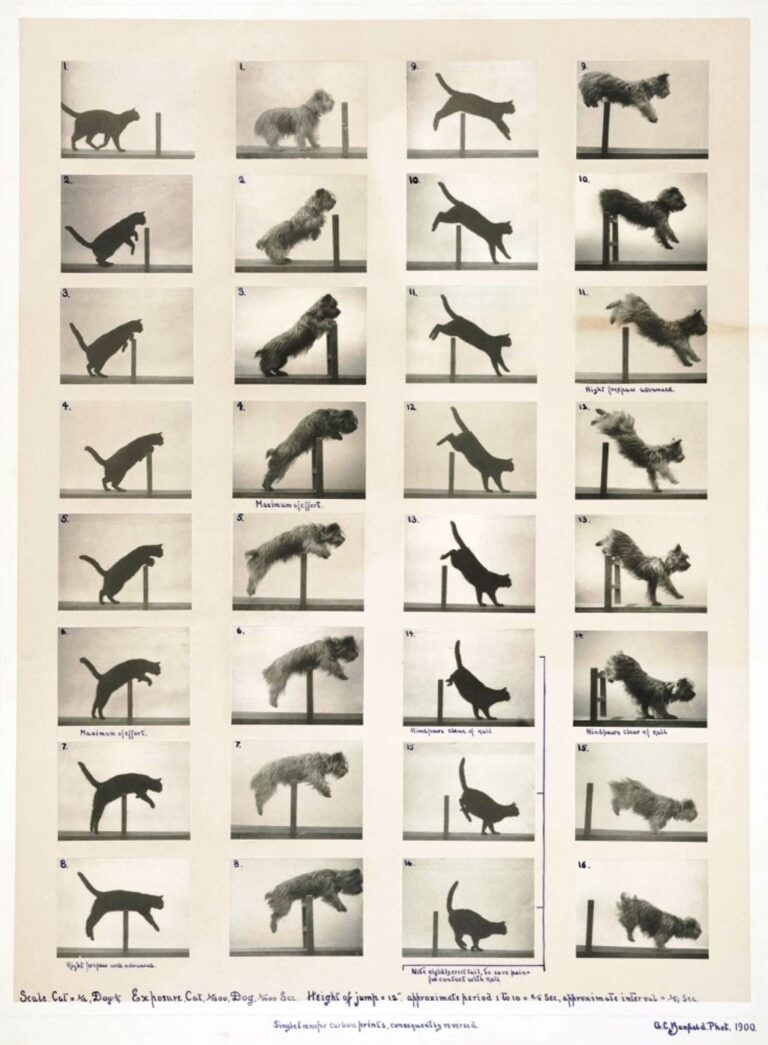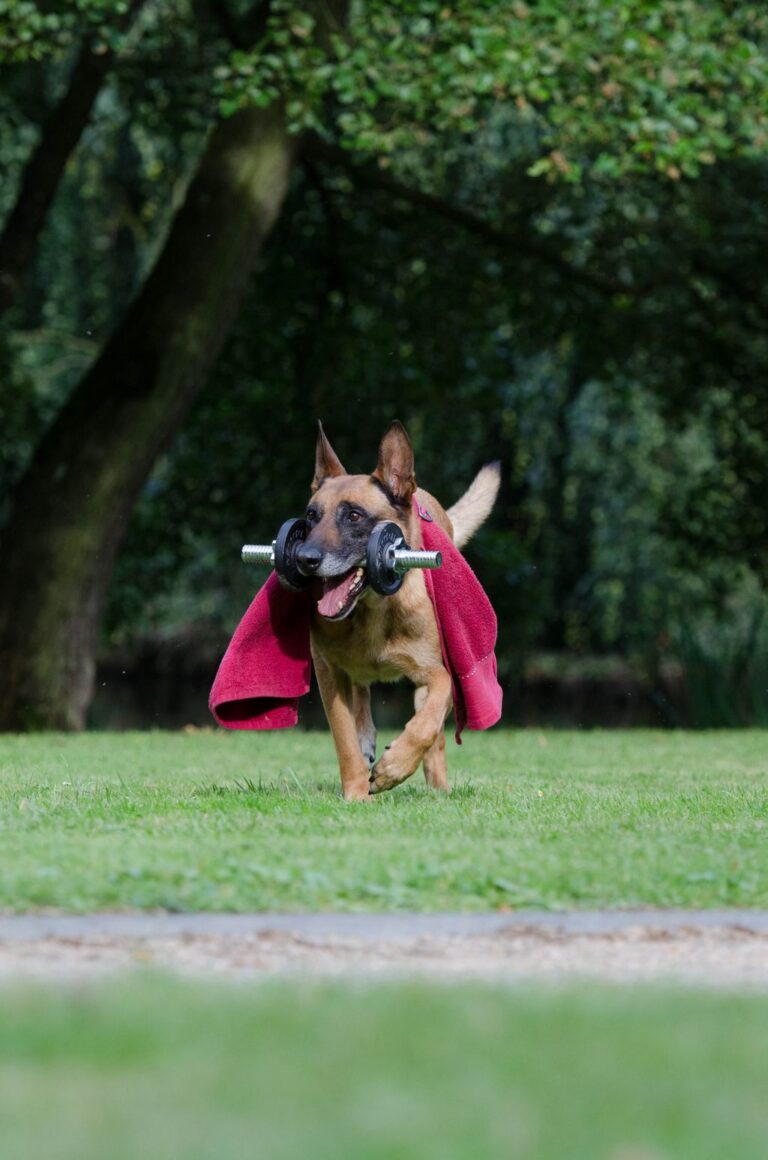Building a Solid Foundation: Dog Basic Obedience Training
Basic obedience training is essential for dogs to ensure their safety, well-being, and harmonious coexistence with humans. This article will provide a comprehensive guide on building a solid foundation for dog basic obedience training. It will cover the benefits of training, common behavioral issues addressed, choosing the right training method, getting started with training, teaching essential commands, addressing common behavioral issues, and maintaining long-term success. Here are the key takeaways from this article:
Key Takeaways
- Basic obedience training is crucial for the safety and well-being of dogs.
- Training helps address common behavioral issues such as leash pulling, separation anxiety, and excessive barking.
- Choosing the right training method is important for effective and positive results.
- Setting training goals, creating a positive training environment, and establishing a training routine are essential for success.
- Teaching essential commands like sit, stay, come, recall, leave it, and drop it is fundamental in obedience training.
Why Basic Obedience Training is Essential for Dogs
Benefits of Basic Obedience Training
Basic obedience training is essential for dogs. It helps them become well-behaved and obedient, ensuring the safety of both the dog and its handler. Through training, dogs learn important commands such as sit, stay, come, and heel. Positive reinforcement techniques, such as treats, praise, and play, are used to teach these commands. Obedience training also builds a strong bond between the dog and its owner, creating a better relationship. It allows dogs to understand what is expected of them and how to respond to commands without fail. By investing time and effort into obedience training, you can bring out the best in your good dog.
Common Behavioral Issues Addressed by Training
When it comes to dog training, addressing common behavioral issues is a crucial aspect of the process. We understand that every dog is unique and may face different challenges. That’s why we’re here to provide guidance and support to help you overcome these obstacles.
If you find that your training efforts are not yielding the desired results, don’t worry. It’s not uncommon to encounter setbacks or feel like you’re not making progress. In such cases, seeking professional help can make a significant difference. A trained expert can assess the root causes of the issues and provide tailored solutions for more effective training.
Dealing with complex behavioral issues, such as severe separation anxiety or obsessive behaviors, can be overwhelming. These challenges require specialized knowledge and expertise. That’s why it’s important to consider professional assistance. Seeking help from a professional ensures that these intricate challenges are addressed with precision and care.
Additionally, if your dog displays aggressive behaviors that pose safety concerns for you, your family, or others, it’s crucial to seek immediate professional assistance. Your safety and the safety of those around you should always be a top priority.
Remember, dog training is not just about teaching commands. It’s about understanding and managing behavioral issues as well. By addressing these issues, you can cultivate a harmonious relationship with your dog and create a positive environment for both of you.
Choosing the Right Training Method
When it comes to choosing the right training method for your dog, it’s important to consider their individual needs and preferences. Every dog is unique, and what works for one may not work for another. Take a step back to assess your current training approach. Consider your dog’s individual preferences, energy levels, and learning style. Be open to adjusting your methods to suit your dog’s needs, creating a more tailored and effective training experience.
Setting Realistic Goals: It’s essential to set realistic and achievable goals in dog training. Plateaus can be discouraging if you’re expecting continuous, rapid progress. Break down larger goals into smaller, achievable steps, and celebrate each accomplishment. This approach informs a targeted and effective training plan.
Tailored Training Plans: Professional trainers create personalized training plans based on your dog’s individual needs, considering factors such as breed, age, temperament, and history. Tailored plans optimize the chances of success in modifying behavior.
Behavior Modification Techniques: Trained professionals possess a repertoire of behavior modification techniques to address various issues. From positive reinforcement to desensitization, they employ evidence-based methods to create positive behavioral changes.
dog-friendly hotels
Getting Started with Dog Basic Obedience Training

Setting Training Goals
Setting Future Goals: Identify specific areas where your dog could improve. This may include mastering new commands, addressing behavioral challenges, or refining existing skills. Establish realistic and achievable goals for future training sessions. These goals should align with both your dog’s capabilities and your desired outcomes, providing a roadmap for continued progress. By keenly observing behaviors, evaluating performance metrics, addressing challenges, celebrating achievements, and strengthening the bond between you and your dog, you can create a tailored and effective training experience. It’s important to remember that every dog is unique, and what works for one may not work for another. Be open to adjusting your methods to suit your dog’s needs and celebrate each accomplishment along the way.
Creating a Positive Training Environment
Use positive reinforcement to reward desired behaviors with treats, praise, or playtime. This creates a positive association with training, making your dog more eager to participate. Keep training sessions short and engaging to maintain your dog’s interest and enthusiasm. Incorporate play into training by using your dog’s favorite toys to reinforce commands. This turns exercises into enjoyable experiences for both you and your dog. By using positive reinforcement, you strengthen the emotional connection between you and your dog, making the training experience a shared journey of growth and understanding. Positive reinforcement also contributes to the long-term maintenance of desired behaviors, ensuring that your dog continues to exhibit good behavior even after the training sessions are over.
Establishing a Training Routine
Embarking on the path of learning dog training encompasses not just a mix of commands and rewards, but a structured approach that benefits both you and your dog. A well-thought-out training routine brings structure to the learning process, setting clear expectations for your furry student. By adopting a consistent training schedule, you pave the way for a successful and enjoyable learning dog training experience.
Creating a Consistent Schedule
Daily consistency is one of the foundational stones of effective dog training. Mastering how to learn dog training involves not merely the exercises themselves, but also embedding them into your dog’s routine. Popular online resources, such as Zak George’s Dog Training Revolution YouTube channel, suggest that sessions should be regular yet varied in content to keep your dog engaged and enthusiastic.
Here’s an ideal breakdown of a daily training schedule tailored for most canines:
- Morning session: Focus on commands like sit, stay, and come.
- Afternoon session: Work on more advanced commands like leave it and drop it.
- Evening session: Practice recall and reinforce previously learned commands.
Tailoring the Routine to Your Dog’s Needs
Each dog is a unique individual, with its own pace and style of learning. The Certification Council for Professional Dog Trainers emphasizes the importance of adjusting your training methods and schedules to complement your dog’s natural tendencies and learning capacity. For some dogs, short and frequent training sessions may lead to better results, while others may benefit from longer and less frequent sessions. Pay attention to your dog’s behavior and adapt the routine accordingly.
Remember, consistency is key in establishing a training routine that works for both you and your dog. Stick to a regular schedule, use consistent commands and rewards, and tailor the routine to your dog’s needs. With time and dedication, you’ll build a solid foundation of obedience training that will benefit your dog for years to come.
Teaching Essential Commands to Your Dog

Teaching Sit and Stay
The Sit Command: One of the first commands taught, the sit command lays the groundwork for establishing control and preparing your dog for more complex tasks. The Stay Command: This teaches your dog to remain in a particular spot and position until released, an essential component for safety and discipline.
Teaching Come and Recall
The Come command is a critical command that signifies the dog should return directly to their owner, no matter the distractions. It is an essential component for safety and discipline. Recall training can be made more engaging by incorporating interactive games like hide and seek. Call your dog and reward them when they find you, adding an element of playfulness. Another way to reinforce the recall command is by using your dog’s favorite toys. For example, ask them to ‘sit’ before tossing a ball or ‘stay’ before engaging in a game of tug-of-war. This makes training an interactive and enjoyable experience.
Teaching Leave It and Drop It
Teaching your dog the commands ‘Leave It’ and ‘Drop It’ is essential for their safety and well-being. These commands can prevent your dog from picking up harmful objects or ingesting something dangerous. ‘Leave It’ teaches your dog to ignore and move away from items that you don’t want them to touch, such as food on the ground or toxic substances. ‘Drop It’ instructs your dog to release an object from their mouth when commanded. This command is useful when your dog has picked up something they shouldn’t have, like a toy that belongs to someone else or a potentially harmful item. By teaching these commands, you can ensure that your dog stays safe and avoids any potential hazards.
To teach ‘Leave It’, start by placing a treat in your closed hand and showing it to your dog. When they try to sniff or paw at your hand, say ‘Leave It’ firmly and close your hand. Wait for a few seconds and then reward your dog with a different treat from your other hand. Repeat this exercise several times, gradually increasing the difficulty by placing the treat on the ground or using more tempting objects. Remember to praise and reward your dog when they successfully leave the item alone.
To teach ‘Drop It’, begin by playing with your dog using a toy or a safe object. Encourage them to hold the item in their mouth and then say ‘Drop It’ while offering a treat as a reward. Gently take the object from their mouth and give them the treat. Repeat this process, gradually increasing the duration of time your dog holds the object before dropping it. Practice this command during playtime and incorporate it into everyday situations when your dog has something in their mouth that they need to release. With consistent training and positive reinforcement, your dog will learn to respond to these commands reliably and keep themselves out of harm’s way.
Addressing Common Behavioral Issues through Training

Dealing with Leash Pulling
Leash training is an important component for dogs exhibiting leash reactivity. This involves teaching the dog to walk on a leash without frustration or pulling when they encounter their triggers. Training should be positive and non-confrontational, ensuring that the leash becomes a tool for communication rather than restriction. Methods can include using a harness instead of a collar to minimize physical discomfort and practicing loose-leash walking techniques in a low-distraction environment before gradually introducing known triggers.
Advanced Training and Socialization
In addressing the leash pulling issue, it’s essential to consider additional tools and techniques that can aid in the training process. Here are some helpful tips:
- Harness: A well-fitting harness can offer better management over the dog’s movements and can reduce strain on their neck.
- Treats: High-value treats are indispensable as a reward and can significantly increase motivation and positive association with training.
- Distance: Always consider the distance between the dog and any stimuli when using treats to make the training more effective.
Remember, the goal is to establish a strong foundation of leash training that allows your dog to walk calmly and confidently by your side. With patience and consistency, you can overcome leash pulling and enjoy stress-free walks with your furry companion.
Managing Separation Anxiety
Managing and Reducing Stress
Stress management is pivotal in behavior modification. A reactive dog often acts out due to underlying stress or fear. Creating an environment that feels safe and consistent for the dog can reduce general anxiety levels. Techniques for reducing stress might involve: Providing a predictable routine, engaging in calming activities like massage or quiet play, and using tools like calming vests or pheromone diffusers.
Leash Training and Leash Reactivity
Leash training is an important component for dogs exhibiting leash reactivity. This involves teaching the dog to walk on a leash without frustration or anxiety. Positive reinforcement techniques can be used to encourage calm behavior on the leash. It is also important to address leash reactivity through desensitization and counter-conditioning exercises.
Breeder Selection
When dealing with separation anxiety, it is important to consider the dog’s background and genetics. Choosing a reputable breeder who prioritizes temperament and socialization can help prevent separation anxiety in the first place. Look for breeders who focus on producing well-adjusted puppies and provide opportunities for early socialization.
Correcting Excessive Barking
Excessive barking is a common behavioral issue that many dog owners face. It can be frustrating and disruptive, especially if it happens frequently or in inappropriate situations. Barking is a natural form of communication for dogs, but when it becomes excessive, it can indicate underlying issues such as anxiety, boredom, or territoriality. To address excessive barking, it’s important to understand the root cause and implement appropriate training techniques. Dog treats can be used as a positive reinforcement tool to reward quiet behavior and redirect the dog’s attention. Additionally, providing mental and physical stimulation through interactive toys and regular exercise can help alleviate boredom and reduce barking. It’s important to be patient and consistent in the training process, as correcting excessive barking may take time and effort.
Maintaining Obedience Training for Long-Term Success

Consistency and Reinforcement
Consistency plays a crucial role in shaping behaviors, reinforcing positive habits, and fostering a harmonious learning environment for our canine companions. It establishes clear expectations for our dogs, allowing them to predict and understand what is expected of them in various situations. By consistently rewarding positive actions and promptly correcting undesired behaviors, we create a reliable framework for our dogs to understand the consequences of their actions. This consistency eliminates confusion and promotes effective communication. It also contributes to the establishment of routine and structure in our dog’s life, helping them feel secure and fostering a positive and receptive mindset. Consistency becomes the thread that weaves the tapestry of a well-trained, confident, and contented dog.
Troubleshooting Training Challenges
Recognize any challenges or obstacles your dog may be facing. Whether it’s difficulty with specific commands or behavioral issues, identifying challenges allows you to tailor your training approach accordingly. Refining Training Techniques: Based on your observations, refine your training techniques. Adjusting methods, introducing new exercises, or seeking professional guidance can address challenges and enhance the overall training experience. Celebrating Achievements: Milestones and Achievements: Celebrate training milestones and
Continuing Training Beyond Basic Commands
Taking Training to the Next Level
As we delve into “Advanced Training Techniques,” we build upon the foundational skills and behaviors covered in previous chapters. This section is designed for those who have established a solid rapport with their canine companions and are eager to take their training to the next level. Advanced training goes beyond basic commands, offering an opportunity to deepen the bond between you and your dog while challenging both their mental and physical capacities.
In part 2, we explore sophisticated training methods that not only enhance your dog’s obedience but also introduce elements of fun and engagement. From refining existing commands to introducing novel tricks and games, we aim to make training sessions enjoyable and mentally stimulating for both you and your four-legged friend. Whether you aspire to participate in dog sports, competitions, or simply want to strengthen your communication and
In Conclusion
Building a solid foundation in dog basic obedience training is essential for a successful and harmonious relationship with your furry companion. By focusing on positive reinforcement, consistency, and patience, you can establish trust, enhance communication, and foster a deep bond with your dog. Remember to always approach training with a positive attitude and adapt to the individual needs of your dog. With these principles in mind, you can embark on an exciting journey of learning and growth, creating a well-behaved and happy dog.
Frequently Asked Questions
Why is basic obedience training important for dogs?
Basic obedience training is important for dogs because it helps establish a strong foundation of good behavior, enhances communication between the dog and owner, and ensures the safety and well-being of both the dog and those around them.
What are the benefits of basic obedience training?
Some benefits of basic obedience training include improved control and management of the dog, increased bond and trust between the dog and owner, better socialization skills, and a reduction in behavioral problems.
What are some common behavioral issues that can be addressed through training?
Training can address common behavioral issues such as leash pulling, separation anxiety, excessive barking, jumping on people, aggression, and destructive chewing.
How do I choose the right training method for my dog?
Choosing the right training method for your dog depends on factors such as their temperament, learning style, and the specific behaviors you want to address. It is recommended to consult with a professional dog trainer to determine the most suitable approach.
How long does it take to train a dog in basic obedience?
The duration of basic obedience training can vary depending on the dog’s age, breed, temperament, and previous training. It typically takes several weeks to a few months to establish solid obedience skills.
Can I train my dog in basic obedience on my own, or do I need professional help?
While it is possible to train a dog in basic obedience on your own, seeking professional help can provide valuable guidance and expertise. A professional dog trainer can assess your dog’s specific needs, provide personalized training plans, and address any challenges that may arise during the training process.






